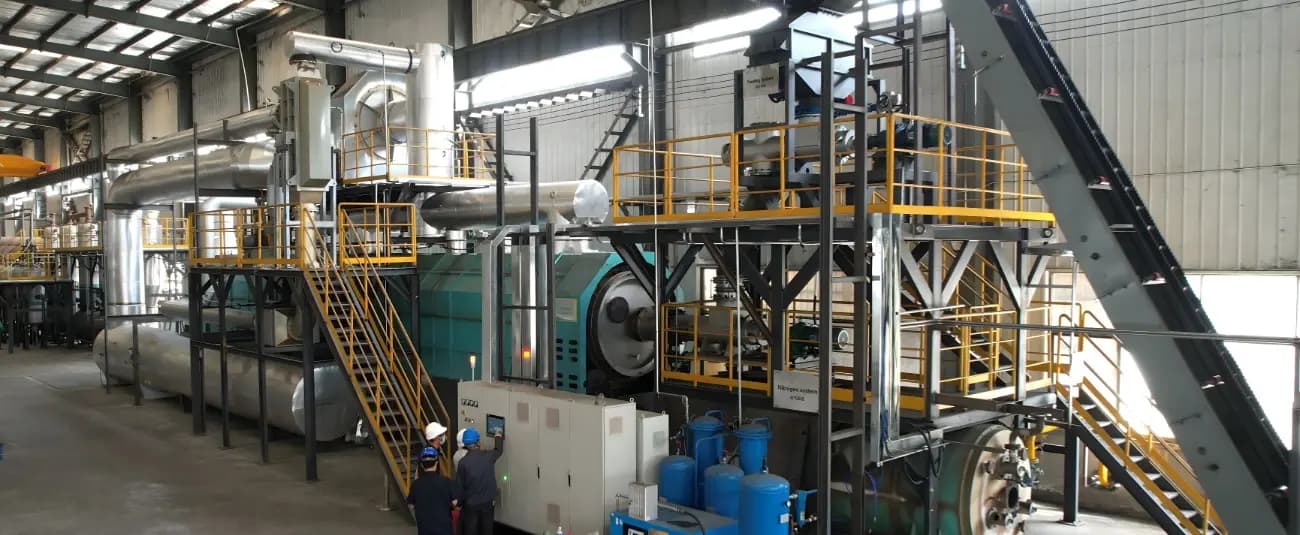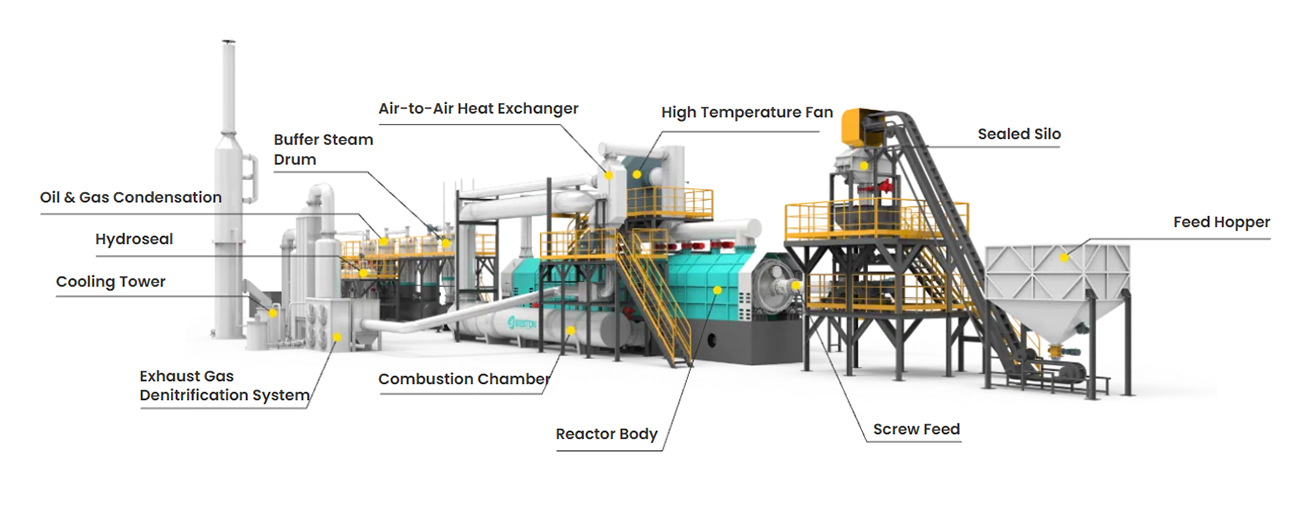As the world continues to battle the growing environmental concerns related to waste management, the need for effective recycling solutions becomes increasingly urgent. Waste tires are one of the most difficult waste types to manage, and improper disposal often results in long-term environmental damage. However, through the continuous tyre pyrolysis plant technology, this problem can be solved efficiently while providing valuable resources that contribute to the circular economy.
What is Tire Pyrolysis?
The tire pyrolysis process is a thermochemical decomposition of waste tires that occurs in the absence of oxygen. This process involves heating tires to temperatures between 400 and 500°C in a sealed reactor. The absence of oxygen prevents combustion, allowing the organic materials within the tires to break down into simpler compounds.
The result is the production of valuable products such as pyrolysis oil, carbon black, steel wire, and syngas. These products have numerous industrial applications, offering a viable solution for both waste disposal and resource recovery.
Advantages of Continuous Pyrolysis
The waste tire pyrolysis plant is a highly efficient system designed for large-scale operations. Unlike batch systems, which require manual loading and unloading, the continuous pyrolysis system operates 24/7 with minimal interruption. Here are some of the key advantages of a continuous tire pyrolysis plant:
- Higher Efficiency: With a continuous system, waste tires are fed into the reactor continuously, increasing throughput and reducing labor costs.
- Stable Operation: The plant runs smoothly with minimal downtime, ensuring a steady production of valuable products.
- Energy Recovery: The plant recycles the syngas produced during pyrolysis to power the reactor, significantly reducing external fuel requirements.
- Environmental Compliance: The plant features advanced emission control systems that meet global environmental standards, ensuring safe and clean operations.
- Low Maintenance: Continuous systems are designed for durability and low maintenance, resulting in reduced operational costs over time.

Product Outputs from Continuous Pyrolysis
The continuous tire pyrolysis plant can process thousands of tons of waste tires annually. The output includes:
- Pyrolysis Oil: Approximately 40% of the output is pyrolysis oil, which can be used as an alternative fuel for industrial boilers, power plants, or further refined into diesel.
- Carbon Black: This is a valuable product used in the production of rubber, plastics, and inks. About 30% of the waste tire is converted into carbon black.
- Steel Wire: The steel wire recovered from the tires can be recycled and sold to the steel industry, contributing to resource conservation.
- Syngas: The gas produced during the pyrolysis process is recycled within the system, providing the necessary energy to heat the reactor.
This efficient process not only reduces the need for raw materials but also cuts down on waste that would otherwise end up in landfills or be incinerated. As a result, the tire pyrolysis process plays a critical role in reducing pollution and conserving natural resources.

Environmental Benefits
One of the most significant benefits of the continuous tyre pyrolysis plant is its positive impact on the environment. The plant addresses several key environmental issues:
- Reduction of Landfill Waste: The plant helps divert waste tires from landfills, which are a significant source of environmental pollution.
- Lower Carbon Emissions: By recycling tires into valuable products, the plant reduces the environmental impact compared to the traditional method of burning or landfilling tires, which release harmful gases into the atmosphere.
- Energy Efficiency: The energy recovery system minimizes the need for external energy sources, making the process highly energy-efficient.
- Cleaner Air and Water: Advanced emission control systems ensure that harmful pollutants such as sulfur, particulate matter, and volatile organic compounds are eliminated, keeping air and water clean.
Economic Benefits
In addition to its environmental benefits, the waste tire pyrolysis plant offers several economic advantages:
- Job Creation: The plant creates job opportunities in the tire recycling industry, including operations, maintenance, and sales of the recovered products.
- Revenue Generation: The sale of pyrolysis oil, carbon black, and steel wire provides a steady source of revenue, making tire pyrolysis a highly profitable business.
- Investment Potential: With the growing demand for sustainable waste management solutions and the increasing price of raw materials, investing in a tire pyrolysis plant offers excellent long-term potential.
The profitability of the continuous tyre pyrolysis plant is a major factor driving its adoption around the world. Many businesses are recognizing the potential for significant returns on investment while contributing to a greener planet.
Conclusion
The tire pyrolysis process offers a promising solution to the growing waste tire problem while providing valuable resources that can be reintegrated into the economy. By investing in a continuous waste tire pyrolysis plant, businesses and governments can reduce waste, conserve resources, and mitigate environmental impact. With its efficient design, economic benefits, and positive environmental outcomes, the continuous tire pyrolysis plant is a critical technology for the future of sustainable waste management. Get in touch with Beston Group for additional insights.